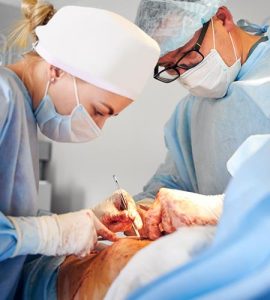Bypass and Angio
The coronary artery is the first branch extending from the aorta to the body. Blockage may occur in this branch in the vascular structure for various reasons. Various interventions are performed to open the blockage that occurs. One of these interventions is coronary angioplasty. With coronary angioplasty, the obstructions in the vascular structure are opened and the obstacles to the nutrition of the heart are eliminated. As a result, with the angioplasty method, heart attacks and other fatal attacks caused by narrowing and obstruction in the coronary artery that provides blood flow to the heart are prevented. As a result of atherosclerosis, which occurs in the coronary artery that feeds the heart, the blood balance in the heart is disturbed. In this case, people have various symptoms such as chest pain, feeling of pressure and tension. Sports that accelerate blood flow and factors such as excitement and stress can also cause an increase in these symptoms.
What Does Coronary Angioplasty Involve?
Coronary angioplasty is as follows in practice: A balloon-like catheter with a thin, pressure-resistant structure is inserted into the narrowed part of the coronary artery. This tiny balloon is inflated. As the balloon inflates, the layer seen inside the coronary artery cracks and the blocked area begins to open. In this method, which is performed without general anaesthesia, the patient’s right groin area or right wrist is entered into the vein. A catheter is inserted into the vein. A dye that does not harm the body is also injected through the vein to increase the visibility of the vein. A thin wire is then sent into the vein under the guidance of the catheter. If the vein is completely blocked, the wire will not pass through the desired point. With the help of this leading wire, the balloon that will open the blockage is sent to the problematic area. The balloon is inflated in the coronary artery and the plaque causing the blockage is cracked. The balloon is deflated and the condition of the vessel is observed. With this method, the blockage is opened. Following the balloon, the appropriate stent is selected and the stent is attached to the ballooned point and the procedure is terminated.
What Does Coronary Bypass Procedure Include?
Coronary Bypass method is one of the preferred methods for opening the blockages in the coronary artery. In the bypass application, an alternative pathway is created with the appropriate tissues taken from the person’s body to the point where the blockage occurs. With this path, the nutrition of the heart continues smoothly. At the point where the blockage occurs in the coronary artery
The use of a tissue taken from the patient’s own body for the created pathway is a suitable and preferred method because it reduces the risk of infection. Of course, each intervention on the subject has its own advantages. The important thing here is to choose the appropriate operation for the patient. In addition, there are great differences in the healing processes of the methods applied.
What is the Difference Between Coronary Angioplasty and Coronary Bypass?
Although the difference between coronary angioplasty and coronary bypass is mainly technical, there are also major differences in the postoperative process. To explain the technical difference in the simplest way; angioplasty is used to open the blockage in the coronary artery in situ, while the bypass method is to ensure that the heart is not affected by the blockage by providing an alternative way to the blockage in the vessel feeding the heart. In the coronary angioplasty method, local anaesthesia is used instead of general anaesthesia and the person is discharged after about 5 hours of rest after the relevant controls are provided.
After angioplasty, physical activities such as heavy lifting, sports or long journeys are not recommended in order not to tire the angioplasty wrist. In the bypass method, the patient must stay under control in the hospital for 5-6 days. The patient will need a period of 1 month to return to his/her daily life after the operation. Because during the bypass procedure, a cut is made in the chest cage to reach the coronary artery. After this procedure, the healing of the incision will take about a month.
Frequently Asked Questions
Health in Globe has been in the healthcare industry since 2000. It has been serving successfully and has performed thousands of successful operations.
Turkey is among the countries that provide the best healthcare services in the world today with its significant investments in the field of health in the last 20 years. In the Hospitals section, you can see the locations where we perform your treatments.
From the airport, we welcome you and our assistants who speak the same language as you will be managing the whole process for you.
We know how difficult the treatment process abroad is. We are with you to improve this process and to get a better quality and economical service. We offer a comprehensive package treatment service so that you can easily meet all your costs and expenses for your treatments. You can benefit from the packages we have prepared for you for your accommodation, treatment expenses, medicines, airport pick-up and transfer, patient host and language interpretations. Plastic Surgery and Hair Transplant Turkey Packages We have a health package that will cover all your expenses, including medical compression garments, for your plastic surgery procedures. You can also benefit from our other services such as accommodation and patient host. Hair restoration packages for your hair transplantation procedures are offered as all-inclusive (hotel accommodation, medications, airport pick-up and transfers, patient host and language interpretation). We have prepared for you our extensive package services such as PRP and mesotherapy with our FUE, implanter pen hair transplantation, painless anesthetic hair transplantation and DHI hair transplantation methods.

RIGHT DIAGNOSIS, RIGHT HOSPITAL, RIGHT DOCTOR, RIGHT TREATMENT.
IN THE MOST PRESTIGOUS HOSPITALS

HEALTH IN GLOBE

AND VIP TRANSPORTATION FACILITIES

WITH THE HELP OF A PERSONAL ASSISTANT

THROUGH MODERN TREATMENT METHODS

HEALTH IN GLOBE
Since 2000, it has been successfully serving the health sector and has performed thousands of successful operations.


